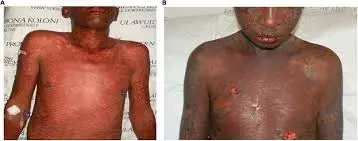- Home
- Medical news & Guidelines
- Anesthesiology
- Cardiology and CTVS
- Critical Care
- Dentistry
- Dermatology
- Diabetes and Endocrinology
- ENT
- Gastroenterology
- Medicine
- Nephrology
- Neurology
- Obstretics-Gynaecology
- Oncology
- Ophthalmology
- Orthopaedics
- Pediatrics-Neonatology
- Psychiatry
- Pulmonology
- Radiology
- Surgery
- Urology
- Laboratory Medicine
- Diet
- Nursing
- Paramedical
- Physiotherapy
- Health news
- Fact Check
- Bone Health Fact Check
- Brain Health Fact Check
- Cancer Related Fact Check
- Child Care Fact Check
- Dental and oral health fact check
- Diabetes and metabolic health fact check
- Diet and Nutrition Fact Check
- Eye and ENT Care Fact Check
- Fitness fact check
- Gut health fact check
- Heart health fact check
- Kidney health fact check
- Medical education fact check
- Men's health fact check
- Respiratory fact check
- Skin and hair care fact check
- Vaccine and Immunization fact check
- Women's health fact check
- AYUSH
- State News
- Andaman and Nicobar Islands
- Andhra Pradesh
- Arunachal Pradesh
- Assam
- Bihar
- Chandigarh
- Chattisgarh
- Dadra and Nagar Haveli
- Daman and Diu
- Delhi
- Goa
- Gujarat
- Haryana
- Himachal Pradesh
- Jammu & Kashmir
- Jharkhand
- Karnataka
- Kerala
- Ladakh
- Lakshadweep
- Madhya Pradesh
- Maharashtra
- Manipur
- Meghalaya
- Mizoram
- Nagaland
- Odisha
- Puducherry
- Punjab
- Rajasthan
- Sikkim
- Tamil Nadu
- Telangana
- Tripura
- Uttar Pradesh
- Uttrakhand
- West Bengal
- Medical Education
- Industry
Stevens-Johnson syndrome survivors at higher and Persistent Cardiovascular Risks: JAMA

Researchers have found in a new study that Stevens-Johnson syndrome/toxic epidermal necrolysis (SJS/TEN) has long-term effects on cardiovascular function beyond the acute phase. Survivors experience higher risks of cardiovascular morbidity and mortality, emphasizing the need for preventive strategies. Further studies with comprehensive clinical data are required to validate these findings. Stevens-Johnson syndrome (SJS) and toxic epidermal necrolysis (TEN) cause diffuse epidermal detachment and necrosis. Patients who survive the initial SJS/TEN episodes are affected by various sequelae. A study was done to investigate the risks of cardiovascular morbidity and mortality in SJS/TEN survivors. This was a nationwide population-based cohort study using data from Taiwan’s National Health Research Institute Database linked to the National Register of Death databases for 1998 to 2021. Survivors of SJS/TEN were identified and matched with non-SJS/TEN participants by age, sex, and Charlson Comorbidity Index. Data analysis was performed from November 2023 to June 2024. Results The CVA cohort included 10 571 SJS/TEN survivors (mean [SD] age, 56.1 [18.5] years; 5358 females [50.7%] and 5213 males [49.3%]). The IHD cohort included 11 084 SJS/TEN survivors (mean [SD] age, 56.6 [18.6] years; 5561 females [50.2%] and 5523 males [49.8%]). The Cox proportional hazards model and competing risk regression model showed that compared with non-SJS/TEN participants, patients with SJS/TEN had higher risks of cardiovascular morbidity (CVA: HR, 1.65 [95% CI, 1.57-1.72] and subdistribution HR [sHR], 1.40 [95% CI, 1.33-1.46]; IHD: HR, 1.58 [95% CI, 1.51-1.65] and sHR, 1.32 [95% CI, 1.26-1.38]) and death due to cardiovascular disease (CVA: HR, 1.69; 95% CI, 1.46-1.96; IHD: HR, 1.55; 95% CI, 1.32-1.82). The increased cardiovascular mortality risks peaked at 1 year after SJS/TEN and persisted for 4 to 7 years. Older survivors and survivors admitted to an intensive care unit at SJS/TEN diagnosis had significantly higher cardiovascular mortality risk. In this cohort study, SJS/TEN had a lasting association with cardiovascular function after the acute phase. This suggests a need to mitigate the elevated cardiovascular morbidity and mortality risks among survivors. Further research using databases or registries with more comprehensive clinical data are needed to validate these results.
Reference:
Chiu H, Chiu Y. Risk of Cardiovascular Morbidity and Mortality in Stevens-Johnson Syndrome/Toxic Epidermal Necrolysis Survivors. JAMA Dermatol. Published online February 19, 2025. doi:10.1001/jamadermatol.2024.5881
Keywords:
Stevens-Johnson syndrome, survivors, higher, Persistent, Cardiovascular Risks, JAMA, Chiu H, Chiu Y.
Dr. Shravani Dali has completed her BDS from Pravara institute of medical sciences, loni. Following which she extensively worked in the healthcare sector for 2+ years. She has been actively involved in writing blogs in field of health and wellness. Currently she is pursuing her Masters of public health-health administration from Tata institute of social sciences. She can be contacted at editorial@medicaldialogues.in.


